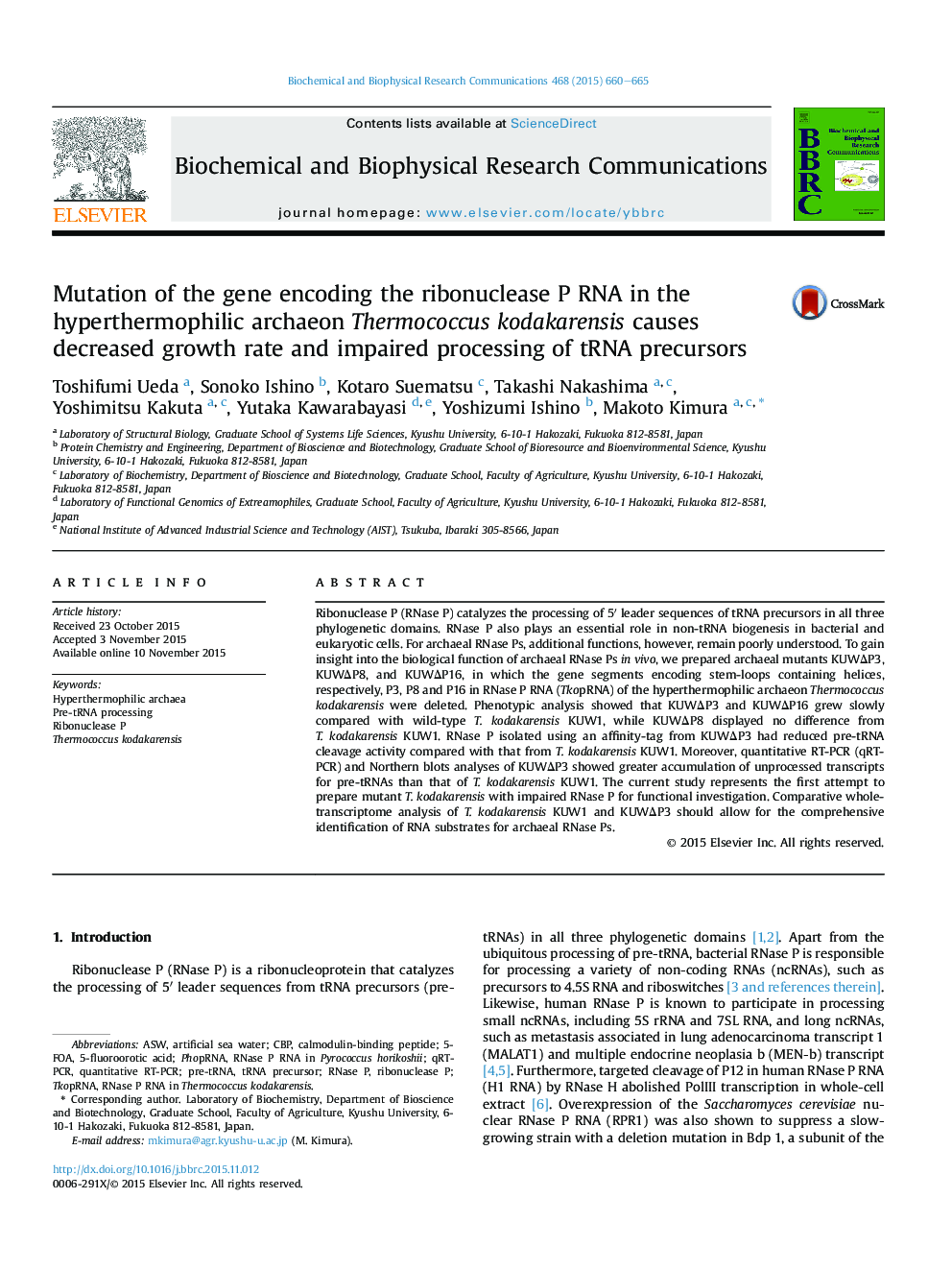| Article ID | Journal | Published Year | Pages | File Type |
|---|---|---|---|---|
| 10749170 | Biochemical and Biophysical Research Communications | 2015 | 6 Pages |
Abstract
Ribonuclease P (RNase P) catalyzes the processing of 5â² leader sequences of tRNA precursors in all three phylogenetic domains. RNase P also plays an essential role in non-tRNA biogenesis in bacterial and eukaryotic cells. For archaeal RNase Ps, additional functions, however, remain poorly understood. To gain insight into the biological function of archaeal RNase Ps in vivo, we prepared archaeal mutants KUWÎP3, KUWÎP8, and KUWÎP16, in which the gene segments encoding stem-loops containing helices, respectively, P3, P8 and P16 in RNase P RNA (TkopRNA) of the hyperthermophilic archaeon Thermococcus kodakarensis were deleted. Phenotypic analysis showed that KUWÎP3 and KUWÎP16 grew slowly compared with wild-type T. kodakarensis KUW1, while KUWÎP8 displayed no difference from T. kodakarensis KUW1. RNase P isolated using an affinity-tag from KUWÎP3 had reduced pre-tRNA cleavage activity compared with that from T. kodakarensis KUW1. Moreover, quantitative RT-PCR (qRT-PCR) and Northern blots analyses of KUWÎP3 showed greater accumulation of unprocessed transcripts for pre-tRNAs than that of T. kodakarensis KUW1. The current study represents the first attempt to prepare mutant T. kodakarensis with impaired RNase P for functional investigation. Comparative whole-transcriptome analysis of T. kodakarensis KUW1 and KUWÎP3 should allow for the comprehensive identification of RNA substrates for archaeal RNase Ps.
Keywords
Related Topics
Life Sciences
Biochemistry, Genetics and Molecular Biology
Biochemistry
Authors
Toshifumi Ueda, Sonoko Ishino, Kotaro Suematsu, Takashi Nakashima, Yoshimitsu Kakuta, Yutaka Kawarabayasi, Yoshizumi Ishino, Makoto Kimura,
